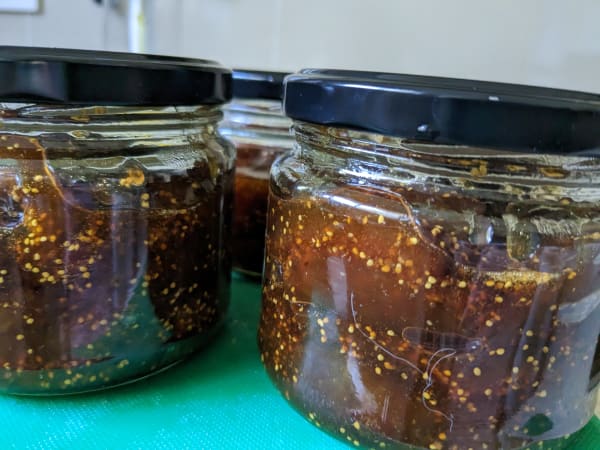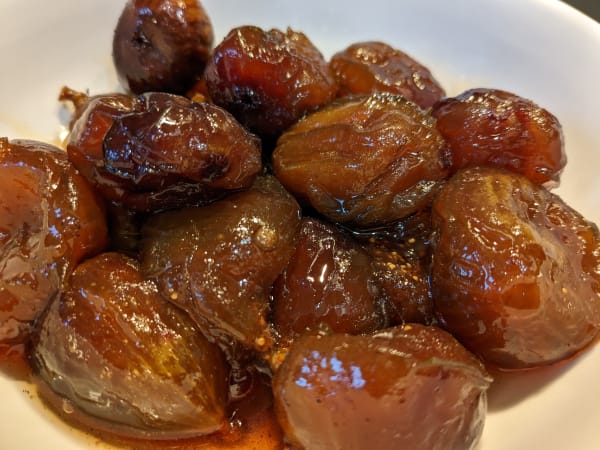It’s fig time and I’m getting stuck into them fresh, but also looking for ways to preserve them so I can enjoy them long after the season ends.
Figs are the one of the oldest cultivated plants and are common in Italian, Greek and Turkish dishes because the Mediterranean climate provides perfect growing conditions.
Cultivated fig varieties, such as Black Genoa and Brown Turkey, grow successfully in most parts of Australia, and will often produce two crops per season (roughly Christmas to April). The deciduous trees are usually large and spreading and make great shade trees.
An interesting fact about fig trees is that the flower is enclosed within the fruit. If you break one open you will see lots of florets or tiny flowers that need to be pollinated. This is achieved by the fig wasp.
Of the 750 species of Ficus worldwide, about 45 are native to Australia. According to the First Nations Food Companion, sandpaper fig (a large rainforest tree) fruit is best, but you can use the fruit from any native fig in the same way you would use European figs.
The best figs are those that are left to ripen on the tree – small and soft flesh with edible seeds – and eaten straight from the tree or soon after picking, at room temperature. Those who are lucky enough to have their own tree need to protect them from discerning birds.
While most of us don’t have the luxury of our own backyard fig supply, they are best eaten on the day of purchase. Be prepared to pay for the trouble that the farmer goes through to protect the fruit on the tree, pick the delicate fruit and to get them safely to your grocer.
Eat them fresh, with little adornment – with ricotta drizzled with honey or with prosciutto and goat's cheese.


Or treat them lightly – sprayed with olive oil and lightly grilled or pureed – and mix with your favourite vanilla ice-cream.
One of the easiest ways of preserving figs and enjoying them year round is to dry them. You can do this in an oven at very low heat or in a home dehydrator. Dried figs will last for months and can be used in a muesli or granola or spread with almond butter as a one-bite treat. If you are a baker, try making your own fruit bread with dried fig and walnut pieces.
If you have a surplus you can always make jam. The internet is jam-packed (sorry) with plenty of recipes. My latest favourite is one from the Best Recipes Australia.

I substituted spiced rum for the sherry and cut the sugar content in half (or less if preferred). Cook it down for longer than the recipe says for a sticky caramelised result.
I also prepared my first batch of pickled figs (recipe from Maggie’s Harvest by Maggie Beer), which Maggie recommends to have with chicken or duck. I paired them nicely with corned silverside.

Get into them and get preserving while they last!









